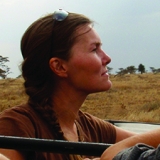This thematic program examines marine resource conservation. This multi-center collaborative project, the first within this thematic program, focuses on improving policy to promote coastal conservation through marine protected areas (MPAs) and related management tools. Because signatories of the Convention on Biological Diversity have committed to establishing MPAs on 10 percent of their coastal waters, a widespread expansion of these areas is underway worldwide.
The resource economics literature’s focus on no-take zones or marine reserves fails to inform the designation, implementation, and management of the broader concept of MPAs, in which some fishers and some fishing technologies are permitted. In particular, low-income countries typically address issues of poverty and a lack of alternative employment opportunities amongst small-scale fishers in conjunction with biodiversity conservation efforts in managing MPAs. As a first project towards developing an EfD-wide marine conservation program theme, this proposal coordinates research across three centers (CA, TZ, SA) to establish similar methodologies for each setting and then to undertake comparative work. This coordinated approach builds on existing research in each center, strengthens each center through the exchange of methodological expertise, and provides a platform for generating general policy and academic modeling perspectives important for MPAs in low-income countries.
The first two years of this program project augmented EfD-CA’s previously funded fishery survey by developing a bioeconomic model of fisher behavior and reaction to policy in parallel to that project. Because Costa Rica will dramatically increase the area in MPAs in the next several years, the survey-based project beginning early in 2012 will provide important “before MPA” information. The tri-center collaboration proposed here began with participants from the 3 centers conducting a series of focus group meetings with different fisher groups and with resource managers to provide information for the preliminary version of the bioeconomic decision model in Costa Rica and to determine additional questions for the survey to insure that the survey provides appropriate parameters for the fuller model. Led by the Tanzanian center, the bioeconomic modeling itself has been informed by fisher-MPA interaction modeling in Tanzania, interdisciplinary marine assessments from South Africa, a literature review, and focus group discussion in Costa Rica. The next stages of this project involve undertaking surveys similar to those in Costa Rica in Tanzania and South Africa, with input and guidance from the CA center, to generate similar sets of information about the three countries to facilitate comparative policy analysis in addition to individual country statistical and modeling analysis. The Tanzanian survey instrument is currently being developed based on the preliminary analysis of the CR survey information and early modeling results and will be tested in September and October of 2013.
In addition to generating many academic and policy outputs to inform MPA policy in low-income countries, this 3-center collaborative project will improve methodological capacity in each center, form pathways for communication and interaction across centers, and lay the groundwork for establishing an EfD-wide program on marine coastal conservation.
The work in the last 4 months of the second year will include:
- train/build capacity in survey writing/implementation in Tanzanian center through SA and CA collaborators;
- prepare the survey instruments for Tanzania survey that contains both similar information to that collected in SA and CR and information specific to the Tanzanian setting including information about income-generating projects and community benefits sharing;
- conduct pilot surveys in Tanzania and begin statistical analysis of data; and
- develop sets of parameters, objectives, and spatial settings for the application of the general model to each of the 3 participating countries.
Year 3 Specific Objectives:
The third year of the project seeks to:
- complete analysis of the general model
- write one journal article draft using the general model with examples from the collaborating centers
- complete survey in Tanzania
- analyze TZ survey data
- write and implement survey in South Africa
- analyze SA survey data
- further develop bioeconomic modeling capacity in all 3 centers
- write descriptive paper comparing the survey data from 3 surveys
- modify the general model for a setting in each country and do analysis
